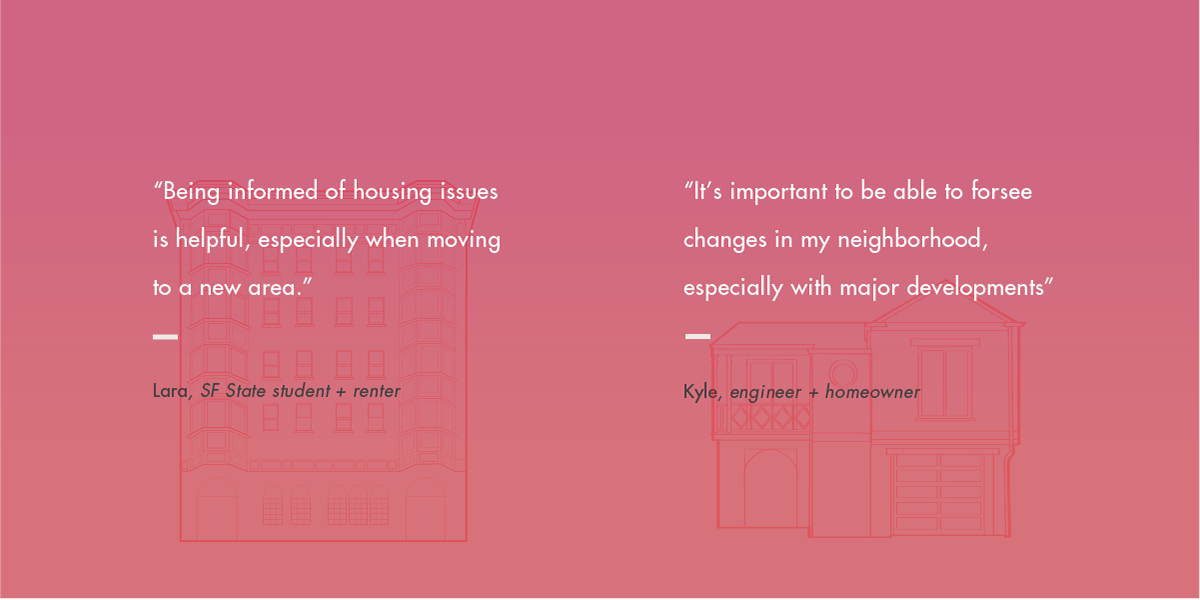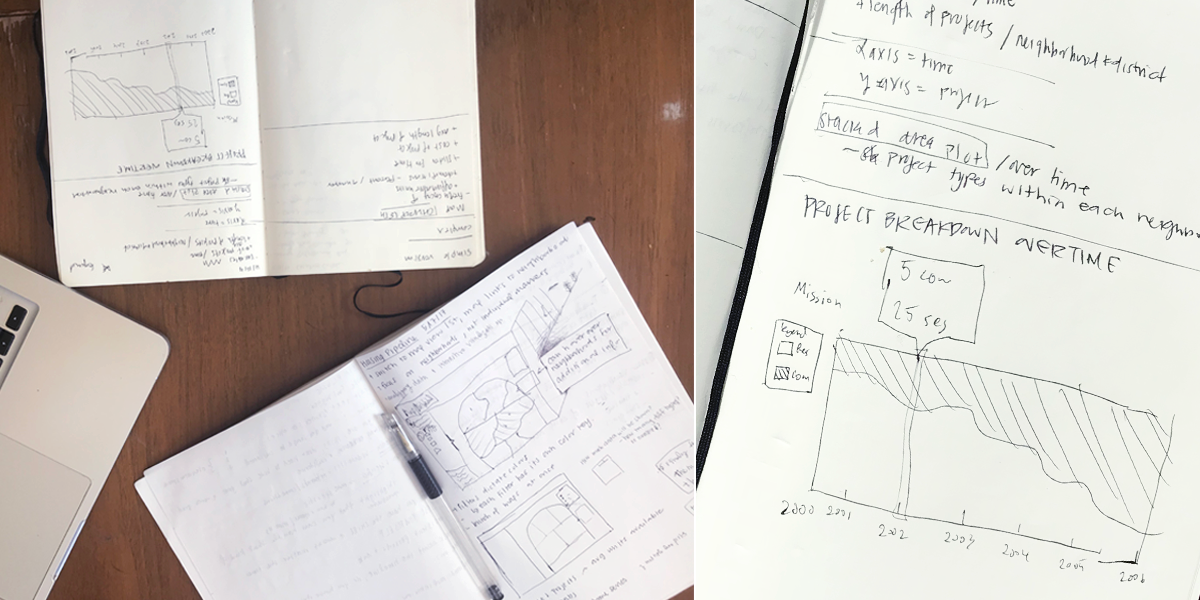The Housing Pipeline
The Housing Pipeline is an in-progress civic volunteer project of the Data Science Working Group at Code For San Francisco.
Each quarter, San Francisco’s Planning Department analyzes data tracking development in the city and loads it onto an open data portal. This project aims to make that data more accessible and to establish useful insights on the impact of housing policy.
Role
As the user design lead, I have been working iteratively with a small team of data engineers and project managers. I've conducted user interviews, compiled data research, and created wireframes and interactive prototypes.

Challenge
Currently the open data portal has limited tools and the data in the reports is difficult to be understood and accessed. Housing is a popular issue of interest amongst policymakers and residents but not much is known about the effects of implemented policy.
Objective + Goals
To address major concerns, we wanted to create a web-based data visualization of the pipeline that is regularly updated and is accessible to both the Planning Department and to the public. Additionally, we want to integrate interactive features and filtering options to better facilitate understanding of the data set and to discover how that will affect housing.
Our main goals for the project includes:
1. Up-to-date Information
Create a data model that can be regularly updated
2. Parse and Analyze
Analyze the data set and form predictions on how the policy might affect housing in the pipeline
3. Visualize the Data
Create a data visualization and detailed user interface design

Research
Housing Pipeline Quarterly Report
My initial research for the project included analyzing past quarterly reports of the data and visualizations. I wanted to see how the data was utilized previously to make informed design decisions and to see what visualizations could be augmented.
Stakeholders + SF Planning Department Interview
We spoke with several members of San Francisco’s Planning Department and the Board of Supervisors to better understand its needs and goals for the Housing Pipeline. We discovered that the Planning Department was extremely interested in viewing the housing permit data on a neighborhood level.
Furthermore, there were sometimes institutional barriers that prevented the data from being more accurate and accessible.

SF Renters and Homeowners Interviews
After identifying the needs of the Planning Department and city officials, I reached out to several San Francisco residents to discuss their concerns with accessing information about housing.
From recently relocated college students to long time residents, there were trends in their motivations and frustrations. It was a common interest amongst residents to have the ability to see how their neighborhoods would potentially be developed in the future and the possible effects housing policy can have.

Ideation
I worked iteratively with engineers on the team to explore possibilities of what the final parsed data would look like, and how it would be accessed by the wide range of stakeholders. Because the data set is so large, we had to streamline what data variables to display. This included frequency of affordable units, demolitions, cost of project, and average length of project.
We conducted several ideation sessions to sketch out and generate as many data and interface concepts as we could.

Design
Visual Data Explorations
My biggest obstacle was balancing the interface with the data visualizations as they both informed each other.
I addressed this by initially assessing how the data might be visualized first. This was a challenge at first as the data isn't fully parsed yet. I also researched and referenced different data visualization possibilities from different programming languages that the engineers were considering utilizing, including D3.js.

Low Fidelity Wireframes
From rough the rough data sketches I began to translate them into low fidelity wireframes.
Our priority was to display information on a neighborhood level and this was a big factor in how I organized the navigation in the interface. I wanted to balance both specialized functionality (for Planning Department members) and public accessibility (for interested residents).




High Fidelity Wireframes
Building upon the low fidelity wireframes using Adobe XD, I began to prototype possible user interactions with filtering the variables. For the data visualizations, I focused on displaying all of the data variables based on density by utilizing different colors.

Project Status
The large data set is still being parsed and we are in discussion with stakeholders about furthering the need for open-source analysis of housing policy. Stakeholders include SF renters and homeowners and members of the SF Board of Supervisors.
The next steps in my role include conducting further user research, leading the design of the desktop site, and implementing visual branding.
(updated March. 2018)

